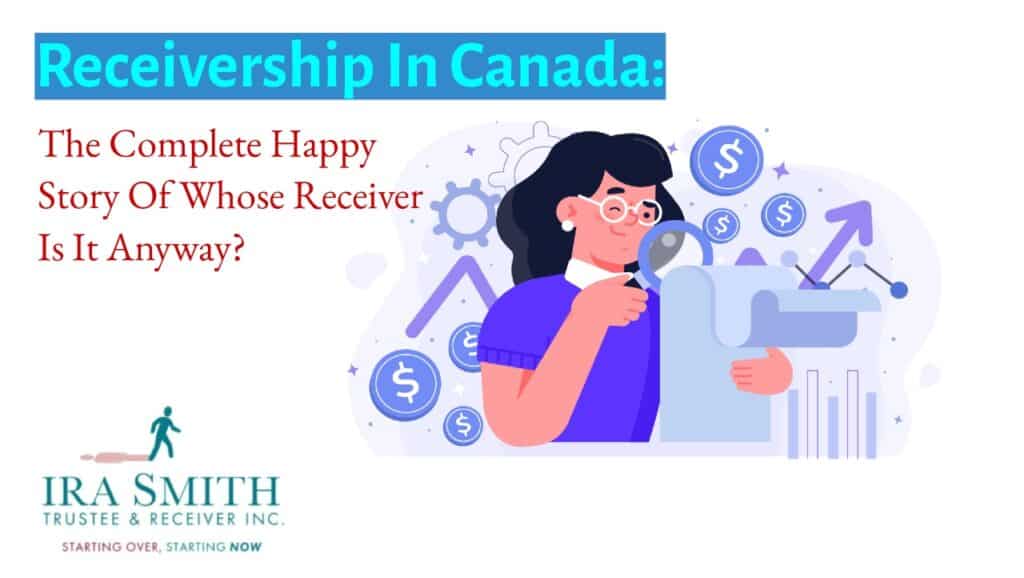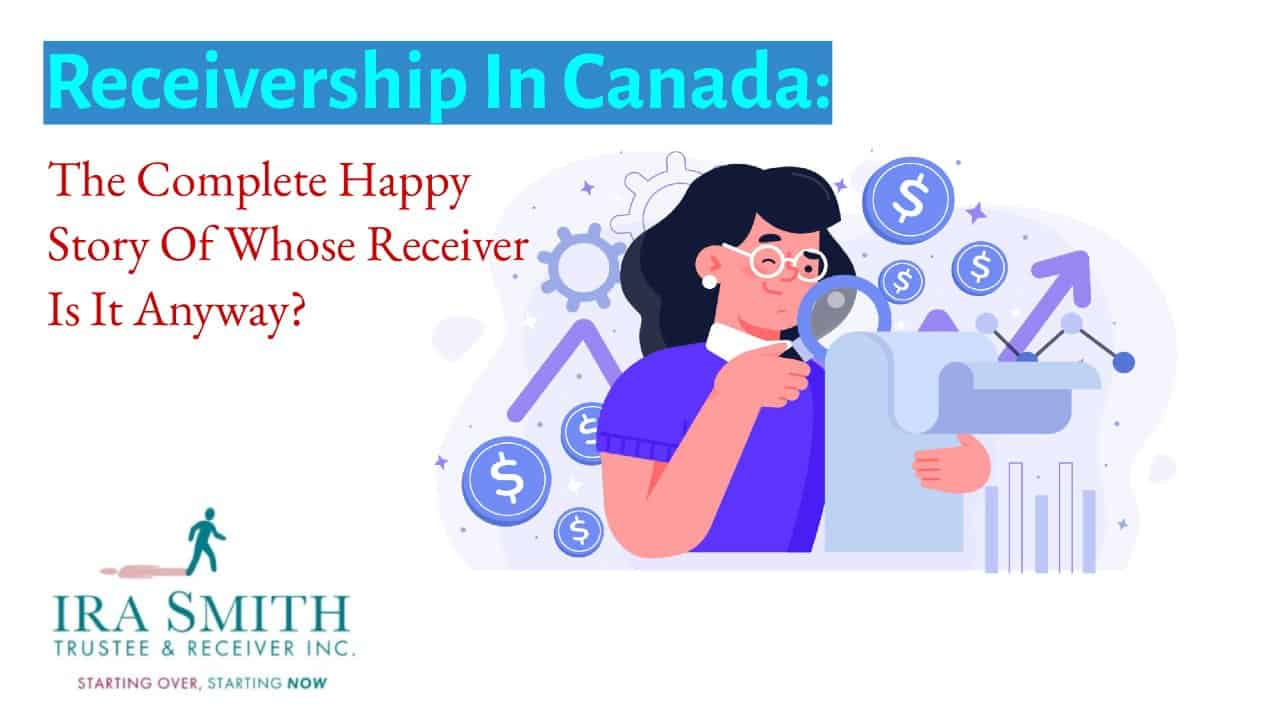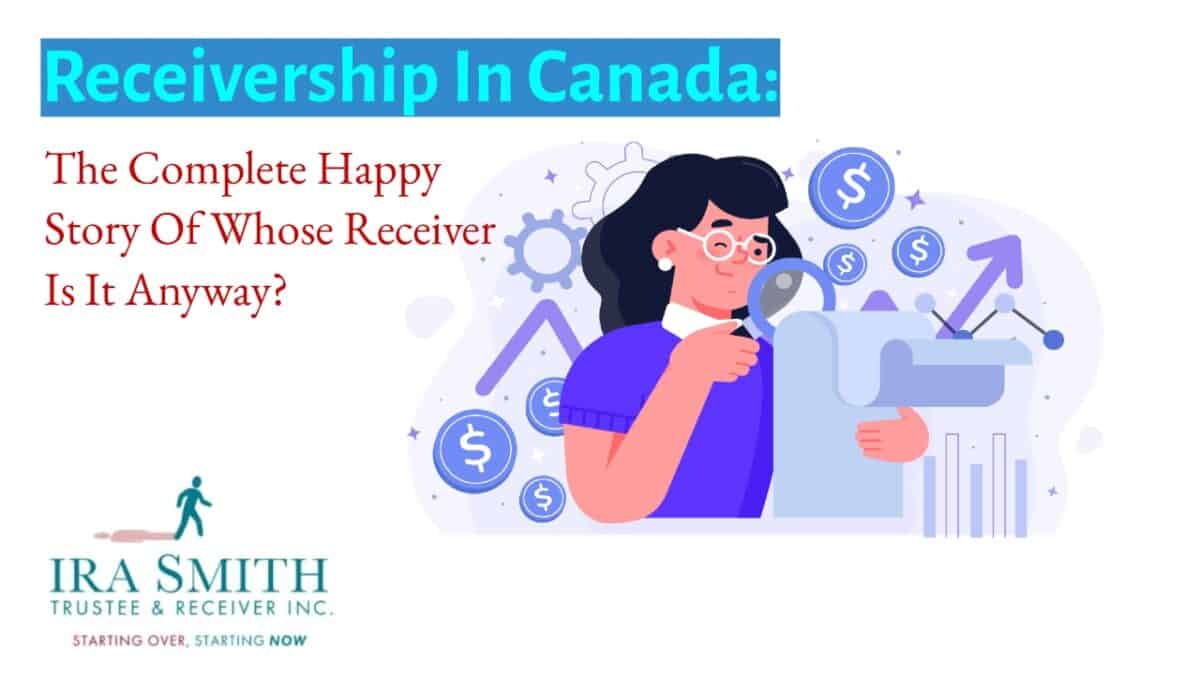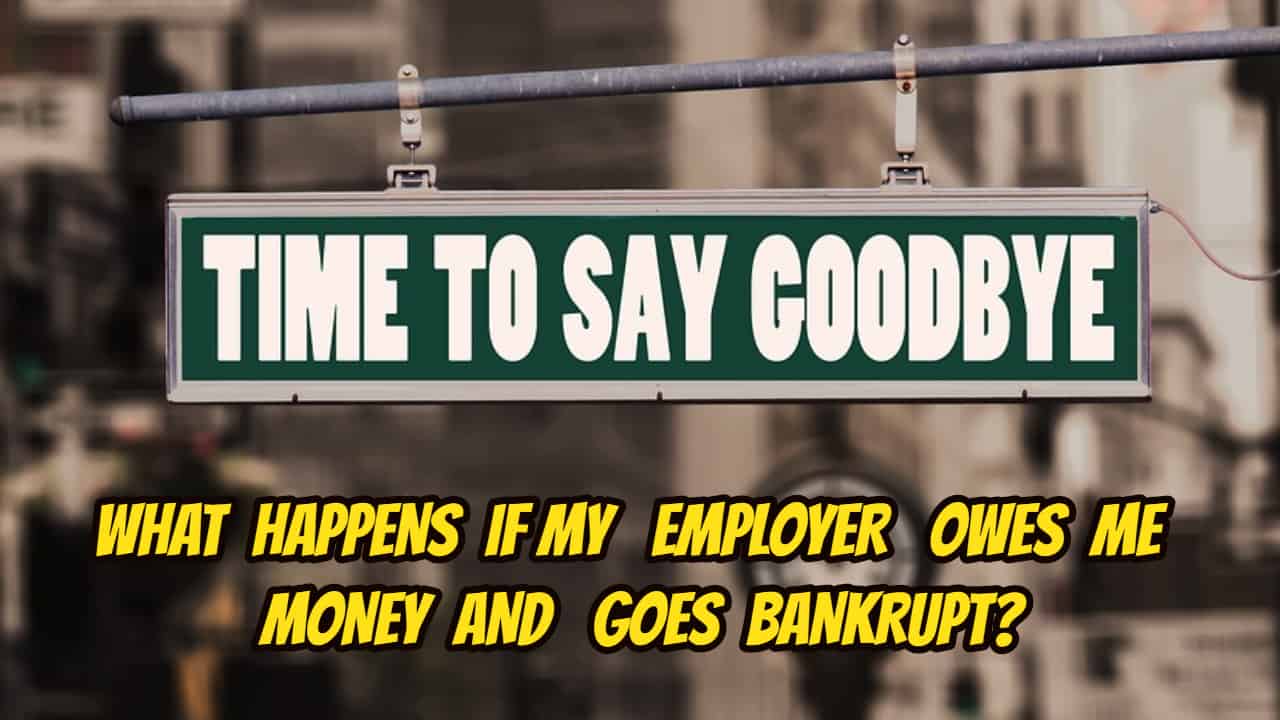Receivership in Canada: What does receivership mean?
I have just read a decision of the Ontario Superior Court of Justice Commerical List dealing with an important aspect of receivership in Canada. The case is concerned with what happens when two equally applicable provincial laws appear to be working at cross purposes in the context of the receivership in Canada process.
I will explain the case and the process of company receivership in Canada. By understanding the process, the case will make more sense.
Secured lenders may enforce their security to recover loans from borrowers who have defaulted. This remedy available to secured creditors when a borrower, usually a company defaults, is known as receivership.
What does going into receivership in Canada mean?
A receivership is a legal process available to secured creditors, whereby a company’s affairs, business and property are entrusted to a receiver to manage and eventually sell the assets. Secured lenders may enforce their security to recover loans from borrowers who have defaulted. This remedy available to secured creditors is known as receivership.
If a business debtor does not make payments or otherwise defaults on a secured loan, the secured creditor would have the right to appoint a receiver to collect the money owed. Before appointing a receiver, a secured creditor must first issue a “Section 244” notice of intention to enforce security. This is a notification that secured creditors must send to defaulting debtors before appointing a receiver. Section 244 refers to that section number in the Bankruptcy and Insolvency Act (Canada) (BIA).
The notice states that the security covers certain assets, that the company in default owes a specified amount to the secured creditor, and that the creditor may enforce the security after 10 days. The company in default may waive the notice period and consent to the appointment of the receiver.
Under the BIA, only a licensed insolvency trustee (formerly called a trustee in bankruptcy) can be a receiver. No other party is licensed to administer a receivership in Canada.

Receivership in Canada: What is the difference between a court-appointed receiver and a privately appointed receiver?
A privately-appointed receiver is a licensed trustee who is appointed by a contract between the insolvency trustee and the secured creditor. A private receiver is typically used when there is no dispute to ranking among secured creditors or various claims to ownership of the company’s assets. The powers of a receiver listed in the security document give the privately appointed receiver more limited powers than a court-appointed receiver gets under a court order.
A receiver is court-appointed when the secured creditor makes an application to the court for the appointment of a receiver with more expanded powers. Like a privately-appointed receiver, a court-appointed receiver takes control of a company’s property because of financial distress and when there is a dispute among secured creditors and others as to the ranking of secured claims and ownership of property.
Both kinds of receivers are tasked with protecting and preserving the value of the company or property and are certainly given broader powers by the court to do so.
How is receivership in Canada different from bankruptcy proceedings?
Many people mistakenly use the terms “receivership” and “bankruptcy” interchangeably. However, bankruptcy and receivership are two distinct legal proceedings with different implications.
Bankruptcy vs. receivership can be confusing, but once you understand the key differences between the two, it is fairly straightforward. Whether it is a private appointment or a court-appointed receiver, the differences between bankruptcy and receivership in Canada are the same.
A receivership is a legal remedy available to secured creditors to enforce their security rights against a defaulting debtor. A receiver is appointed to manage the debtor’s property and assets and sell them under a properly run and fair sales process.
The Canadian bankruptcy process is a distinct legal process. An insolvency trustee does not represent secured creditors in bankruptcy proceedings. Instead, under the bankruptcy regime, they represent the unsecured creditors of the bankrupt estate. A corporate debtor may be subject to both bankruptcy and receivership proceedings simultaneously.
One of the major differences has to do with the creditors. In a bankruptcy administration, the bankruptcy trustee must call a meeting of creditors. This is where the insolvency trustee provides its report on the affairs and conduct of the bankrupt debtor and unsecured creditors get to vote on any matters of importance. In receivership, there is no such requirement to hold a meeting of creditors.

What are the key distinctions between receivership in Canada and liquidation?
So you know what receivership is by now. The federal BIA doesn’t govern liquidation, that’s done under the provincial Business Corporations Act or Wind-Up Act.
A liquidation is for a solvent company where the shareholders, Officers and directors decide to cease business operations. The company puts up its assets for sale and uses the proceeds to pay off its creditors with cash. Any funds left over are then distributed to the shareholders.
A liquidator can be appointed either privately by the company’s directors or by a court order. Liquidation is therefore different from both bankruptcy and receivership in Canada.
Can individuals be placed into receivership in Canada?
The answer is yes. When a secured creditor wishes to take enforcement action upon the security agreement they have against a debtor’s property, as indicated above, they have the remedy of receivership in Canada. This remedy allows them to collect as much of their secured debt as possible.
There are no restrictions as to who can go into receivership in Canada. One of our more famous (infamous?) receivership cases over the years has been the receivership of the assets, property and undertaking of Norma and Ronauld Walton.

Receivership in Canada: Whose receiver is it anyway?
Now for the court case where two different provincial laws caused a fight amongst secured creditors over the appointment of a receiver. The case is Canadian Equipment Finance and Leasing Inc. v. The Hypoint Company Limited, 2618905 Ontario Limited, 2618909 Ontario Limited, Beverley Rockliffe and Chantal Bock, 2022 ONSC 6186. The two competing provincial statutes are the Mortgages Act and the Personal Property Security Act.
The business is conducted through two affiliated entities. One owns the property and the other operates the business. This is quite a typical arrangement.
One creditor funded the purchase of equipment and took PPSA security over it. Another creditor funded the acquisition of the real property and has a traditional mortgage security. The security agreements extend over different assets, and the outcome is usually uncomplicated.
However, when equipment that has been purchased is attached to real property, there is disagreement about whether and how it can be removed, and whether such removal will negatively affect the value of both the equipment and the real property. The question is now more complicated: which creditor’s rights should take priority over this matter?
Both the equipment lender and the mortgagee are seeking to enforce their security. The equipment lender has filed a motion with the court to appoint a receiver over both the operating company (Opco) that owns the pledged equipment and the holding company (Holdco) that owns the real estate. This would allow the receiver to manage and sell the assets of both companies in order to repay the outstanding debt.
In this case, Opco was a commercial marijuana operation that was unable to get off the ground due to its heavy debt load and startup problems.
Although the mortgagee began power of sale enforcement proceedings, they do not object to a receiver being appointed over the equipment only. The mortgagee wishes to continue its power of sale proceedings and opposes the receiver being appointed over the building. The mortgagee in possession is of the opinion that the equipment is attached to the building and cannot be removed.
The mortgagee concurred that the court has the power to assign a receiver over the property of both Opco and Holdco according to section 101 of the Ontario Courts of Justice Act. They stated that, if a receiver is appointed, the receiver needs to be a firm chosen by them.
Both the licensed insolvency trustee firm preferred by the mortgagee and the firm nominated by the equipment lender filed a consent to act with the court.
What are the conditions under which a receiver may be appointed?
The court looked at numerous factors in order to make a decision on whether or not to appoint a receiver, and if so, which one, including those that have historically in receivership in Canada cases been taken into account in such determinations:
- Although it is not essential for a creditor to establish irreparable harm if a receiver is not appointed where the appointment is authorized by the security documentation, the court considered if no order is made, will irreparable harm be caused?
- The size of the debtor company’s equity in the assets and the need for protection or safeguarding of assets during litigation are important factors to consider when assessing the risk to the security holder.
- The kind of property it is.
- The potential for the assets to be wasted or dissipated.
- The need to safeguard the property until a legal ruling is made.
- The parties’ respective balance of convenience needs to be considered when making the decision.
- Pursuant to the loan documentation, the creditor has the right to an appointment.
- Enforcing the security instrument when the security holder experiences or anticipates difficulties with the debtor.
- The principle of appointing a receiver should be approached with caution.
- The court will determine whether appointing a receiver is necessary to enable the receiver to carry out its duties efficiently.
- The effect a receivership order will have on the parties.
- The parties’ conduct.
- How long a receivership may last.
- The financial impact on the parties.
- The likelihood of maximizing return to the parties is increased.
- The goal of ensuring the smooth running of the receiver’s duties.
As everyone agreed that all assets of both Opco and Holdco should be sold to maximize recovery for all creditors, but cannot agree on the process by which that should be undertaken, resulting in the entire process being stalled, the judge was satisfied that it is just and convenient to appoint a receiver.
The court found that either proposed receiver was acceptable and decided that the receiver nominated by the mortgagee would be appointed by the court to administer all assets. The receiver would eventually come back to court with a sales plan to maximize the value of all the assets subject to the security of all stakeholders.

How the entrepreneur can avoid receivership in Canada
As a business owner, the way to avoid the receivership process is long before financial difficulties ever become serious financial problems. Here are a few tips on how to do just that:
- Keep a close eye on your finances. This means regularly reviewing your income and expenses, and making sure you have a good handle on your cash flow.
- Stay current on your bills. This includes not only making timely payments but also staying on top of any changes in your billing terms or amounts.
- Keep good records. This means having up-to-date financial statements and documentation for all of your income and expenses.
- Make a plan. If you do find yourself in a financial bind, have a plan in place for how you’ll get out of it. This may include negotiating with creditors, seeking new financing, or making cuts to your expenses.
- Seek professional help from a licensed insolvency trustee with commercial insolvency experience. If your business is viable and you seek help early enough, there may be many options. The most common ones are refinancing with or without financial restructuring. Reviewing your business allows us to make restructuring recommendations allowing your viable company to become healthy and profitable once again.
Receivership in Canada summary & speak with a licensed insolvency trustee
I hope you enjoyed this receivership in Canada Brandon’s Blog.
Revenue and cash flow shortages are critical issues facing entrepreneurs and their companies and businesses. Are you now worried about just how you or your business are going to survive? Those concerns are obviously on your mind. Coming out of the pandemic, we are now worried about its economic effects of inflation and a potential recession.
The Ira Smith Team understands these concerns. More significantly, we know the requirements of the business owner or the individual that has way too much financial debt. You are trying to manage these difficult financial problems and you are understandably anxious.
It is not your fault you can’t fix this problem on your own. The pandemic has thrown everyone a curveball. We have not been trained to deal with this. You have only been taught the old ways. The old ways do not work anymore. The Ira Smith Team makes use of new contemporary ways to get you out of your debt problems while avoiding bankruptcy. We can get you debt relief now.
We have helped many entrepreneurs and their insolvent companies who thought that consulting with a trustee and receiver meant their company would go bankrupt. On the contrary. We helped turn their companies around through financial restructuring.
We look at your whole circumstance and design a strategy that is as distinct as you are. We take the load off of your shoulders as part of the debt settlement strategy we will draft just for you.
We understand that people facing money problems require a lifeline. That is why we can establish a restructuring procedure for you and end the discomfort you feel.
Call us now for a no-cost consultation. We will listen to the unique issues facing you and provide you with practical and actionable ideas you can implement right away to end the pain points in your life, Starting Over, Starting Now.




